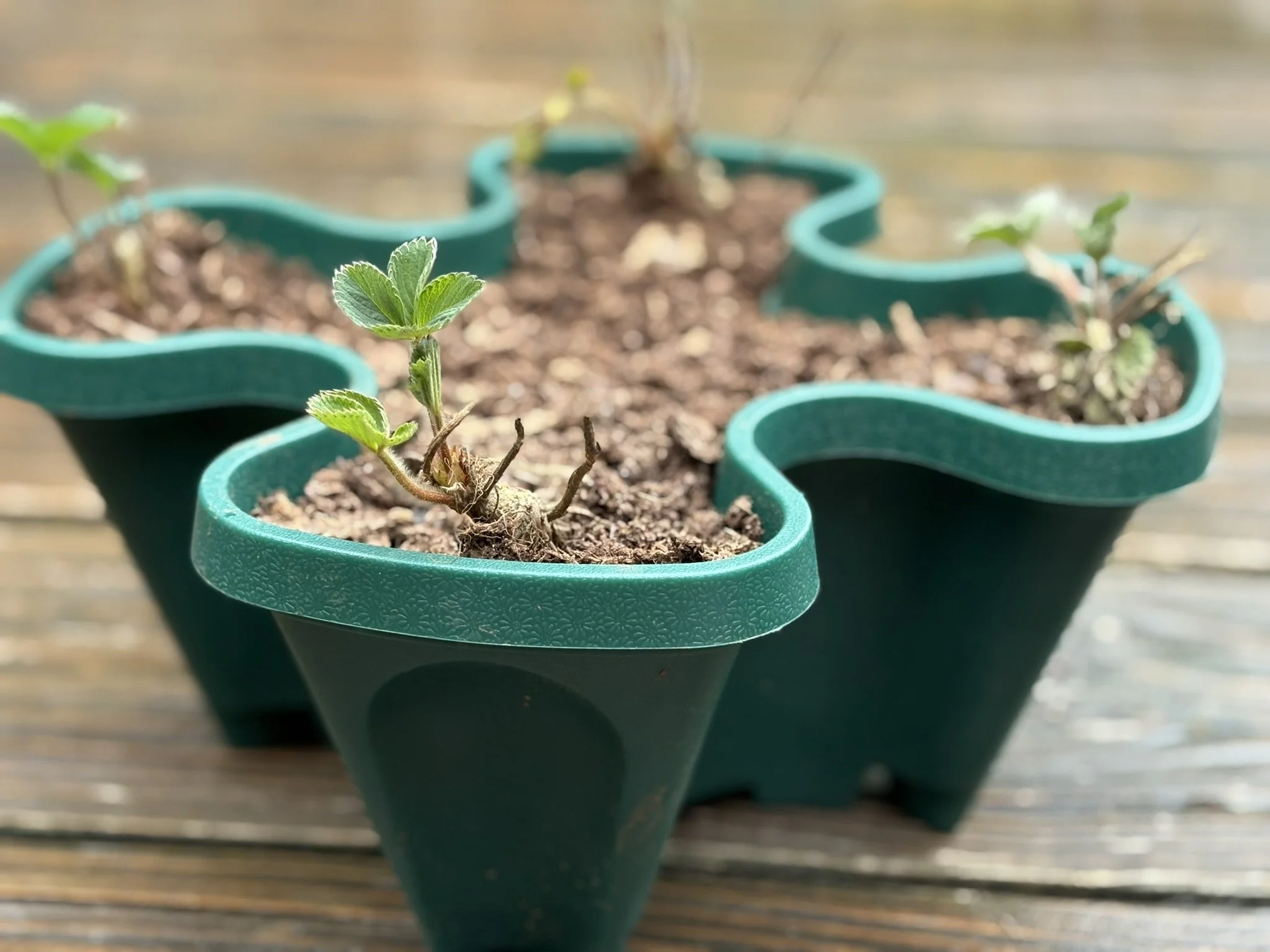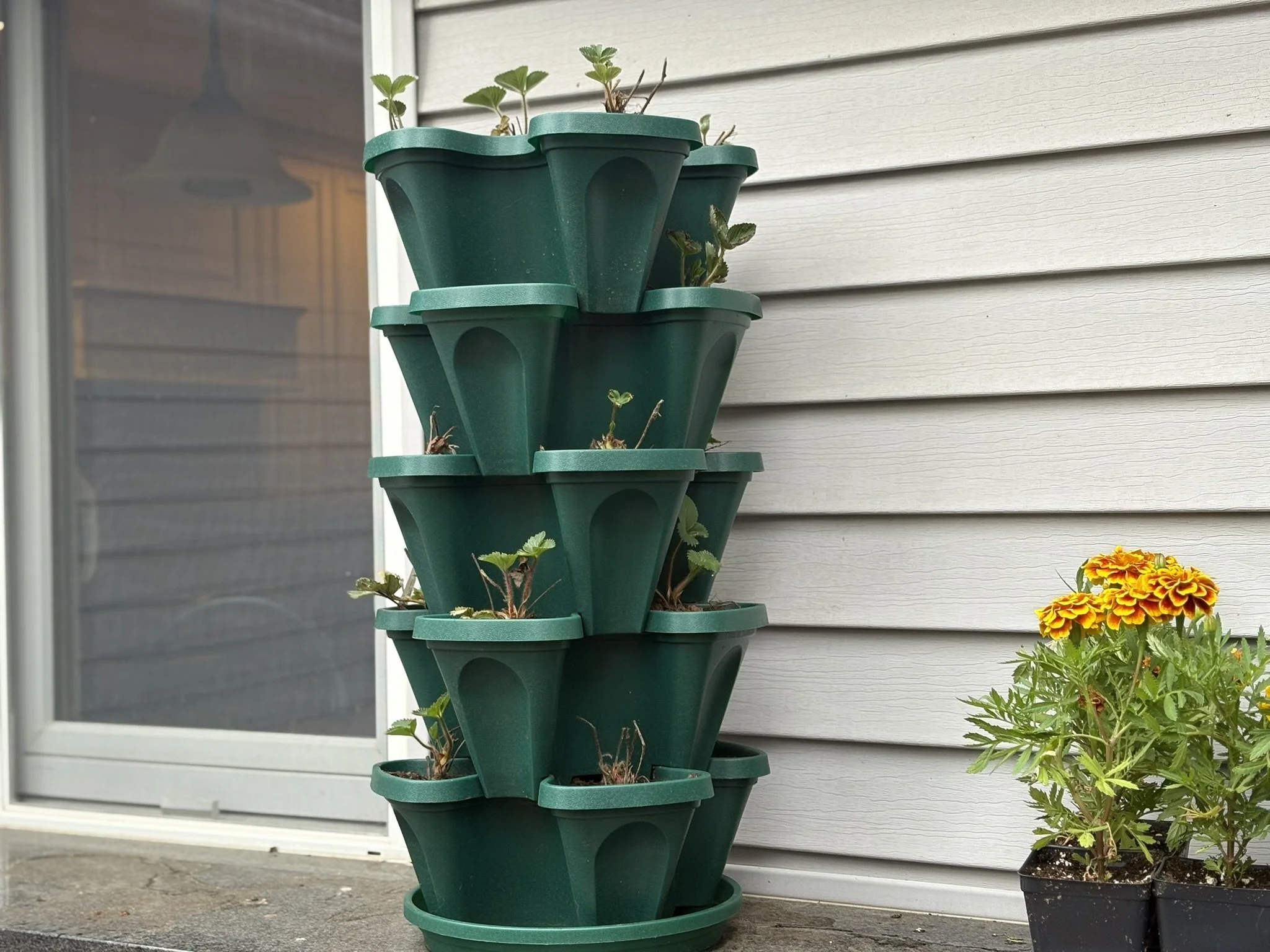Why Vertical Gardening Is Better for Growing Strawberries (and How to Do It Right)
mr stacky vertical planter, strawberry tower, vertical gardening
Have you ever tried growing strawberries, only to lose them to pests, rot, or limited garden space? I’ve been there—and that’s exactly why I started exploring vertical gardening as a solution. In this post, I’ll walk you through the surprising benefits of growing strawberries vertically and show you how I used a 5-tier Mr. Stacky planter to grow four strawberry varieties in a small space with great success.
What Is Vertical Gardening?
Vertical gardening is simply the practice of growing plants upward instead of outward—think wall-mounted planters, stacked containers, or hanging baskets. It’s especially popular for small spaces like balconies, patios, and urban gardens. But here’s the exciting part: strawberries actually thrive in vertical setups!
Why Vertical Gardening Is Ideal for Strawberries
1. It Keeps Fruit Off the Ground
One of the biggest issues when growing strawberries in the ground or in raised beds is fruit rot. When the berries rest on damp soil, they’re more prone to mold, rot, and slug damage. A vertical system keeps the berries elevated and dry, which means less spoilage and more edible fruit.
2. Improved Airflow Reduces Disease
Vertical planting creates natural spacing between plants and allows for better airflow, which is crucial for preventing fungal issues like powdery mildew and leaf spot. Your strawberry plants will be healthier and more productive as a result.
3. Space-Efficient for Small Gardens
If you’re gardening in a small yard, balcony, or deck, vertical gardening allows you to grow more with less space. My Mr. Stacky vertical planter holds 20 strawberry plants in just a couple square feet—compare that to the space needed for a traditional bed!
4. Easier Maintenance and Harvesting
Bending down to weed, prune, or harvest can be a hassle. Vertical planters raise the fruit to eye or waist level, making it easier to check for pests, pick berries, and prune runners—without straining your back.
5. Fewer Pests
Slugs, snails, and certain soil-dwelling pests are less likely to reach vertically grown strawberries. While it doesn’t eliminate pests entirely, it definitely cuts down on how often I have to deal with them.
Want to see more of my in-ground strawberry growing journey? Check out my YouTube Video here: Crazy amounts of Strawberries in my backyard: Week 2-3 Update. 2023 total - 16lbs & counting!
How I Planted Strawberries Vertically with Mr. Stacky
To test the concept, I planted four strawberry varieties—Earliglow, Honeoye, Tribute, and Ozarke—using five 5-tier Mr. Stacky planter. Here’s a quick overview of how I made it work:
- Filled each tier with rich potting mix, compost, and worm castings.
- Planted one strawberry crown in each of the 20 pockets.
- Stacked the tiers and watered slowly from the top to ensure moisture trickled through.
The results? Vigorous growth and healthy green leaves. I’ll share the full harvest update soon, but even now I can tell this method was a win.
Best Practices for Vertical Strawberry Success
- Choose everbearing varieties like Tribute or Ozark for continuous fruit through summer.
- Use high-quality soil—strawberries are heavy feeders and need nutrition to thrive in containers.
- Water regularly, especially the top tiers, which dry out faster. Early morning is best.
- Fertilize every 2–3 weeks with a diluted organic fertilizer (I like fish emulsion or seaweed-based).
- Pinch runners early to redirect energy into fruit production instead of spreading.
Tools & Supplies I Recommend
- Mr. Stacky 5-Tier Vertical Planter or a GreenStalk Vertical planter
- Old Farmer’s Almanac Strawberry Growing Guide
- Organic potting mix with compost
- Liquid fertilizer (fish emulsion or seaweed)
- Hand trowel and watering can
Bonus: Great for Kids & Beginners
If you have kids or are just getting started with gardening, a vertical strawberry planter is a fun and rewarding way to grow your own fruit. Kids love checking the pockets for new berries, and the low-maintenance setup means fewer frustrations for beginners.
Final Thoughts
Vertical gardening has totally changed the way I grow strawberries. It’s cleaner, easier, and way more productive than traditional methods. Whether you're growing in a backyard or on an apartment balcony, I highly recommend trying it—especially with a system like Mr. Stacky that keeps things simple and affordable.
For more tips, check out my beginner guide to growing greens this spring. And stay tuned for my upcoming harvest update to see how my vertical strawberries perform through the season!
















